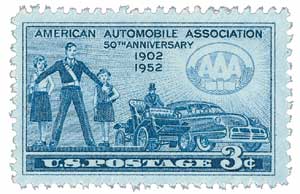
# 1007 - 1952 3¢ A.A.A.
3¢ American Automobile Association
City: Chicago, IL
Quantity: 117,415,000
Printed by: Bureau of Engraving and Printing
Printing Method: Rotary Press
Perforations: 11 x 10½
Color: Deep blue
Founding Of AAA
In the early 1900s, poor road conditions wreaked havoc on cars. In an effort to improve these roads and get new ones created, a group of nine automobile clubs banded together to form the American Automobile Association.

The AAA had its first meeting in Chicago, Illinois on March 4, 1902. Clubs came from other states to participate, with a total of 1,500 members joining the new organization. In 1904, the first American automotive club, the American Motor League, joined the AAA.
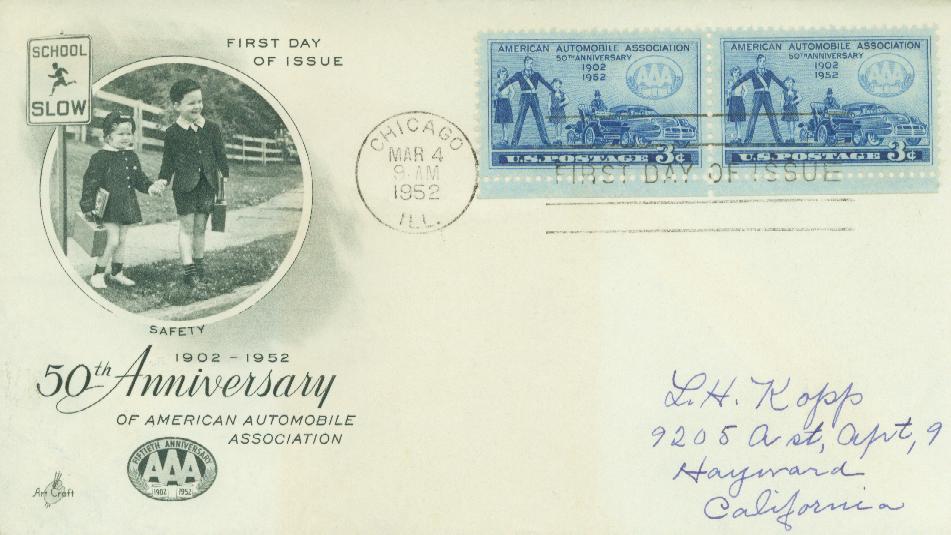
The AAA published its first maps in 1905 and began printing hotel guides in 1917. And in 1920, they started their School Safety Patrol Program, the first of several AAA driver safety programs. In 1935, they published Sportsmanlike Driving, which was the first course for high school teachers. The following year the AAA created the first driver’s education materials for American high schools, which is now known as Responsible Driving. Also in 1936, the AAA inaugurated its pedestrian safety program, which promotes safe practices to reduce pedestrian fatalities.
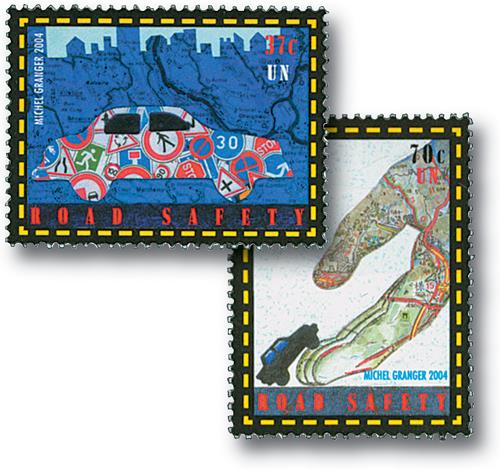
During both World Wars, the AAA supported the war effort. During World War II, they supported the use of synthetic rubber in the face of manufacturing reductions. They also encouraged people to drive less to conserve fuel. The AAA made many strides during the war – ending the sale of harmful anti-freeze solutions, increasing the number of auto mechanics when faced with a shortage, monitoring tire and gas rationing, and establishing driver training programs for veterans with artificial limbs.
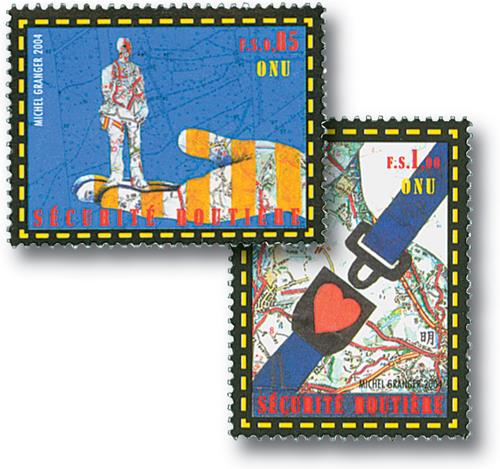
The AAA had created the Racing Board (also known as the Contest Board) early in its history and sponsored national racing championships for several decades. However, after a major crash at one of the races in 1955, they left this arena, as it distracted from their main goal of road safety.
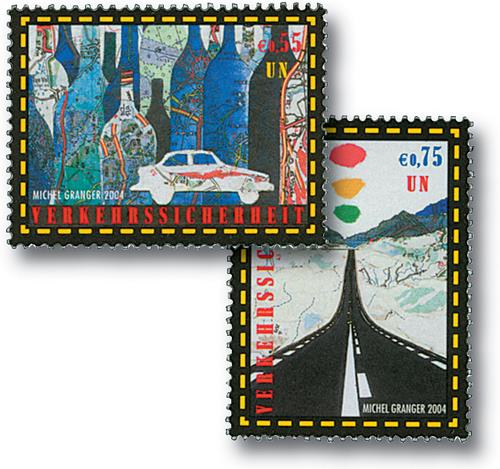
The AAA made major contributions to national safety in the 1960s by helping to create the National Traffic and Motor Safety Vehicle Act of 1966. This act set safety standards for cars, tires, and equipment. They also helped create the Highway Safety Act, which set standards for car inspections and registration as well as driver education, licensing, traffic courts, highway design, maintenance, and traffic control.
In the 1970s, the AAA inaugurated its Gas Watchers program to help people conserve gas. And in the 1980s, their road atlas became a New York Times best-selling paperback within six weeks. The 1980s also saw the AAA focus on school safety as well as truck and bus safety. And in the 1990s, the AAA supported legislation that called for use fees charged to motorists to be used to improve roads.
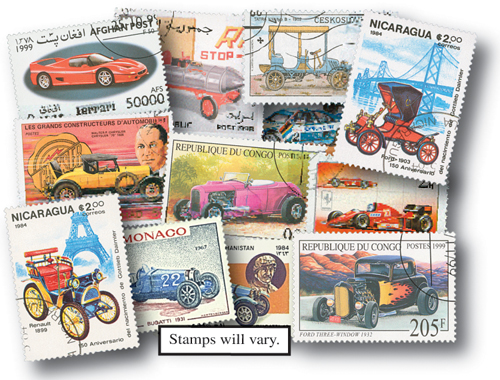
Today the AAA has over 60 million members in the US and Canada. The AAA is the world’s largest travel organization, offering trip planning assistance, travel and hotel reservations, and insurance – in addition to its renowned emergency service. They continue to push for legislation that positively affects motorists.
3¢ American Automobile Association
City: Chicago, IL
Quantity: 117,415,000
Printed by: Bureau of Engraving and Printing
Printing Method: Rotary Press
Perforations: 11 x 10½
Color: Deep blue
Founding Of AAA
In the early 1900s, poor road conditions wreaked havoc on cars. In an effort to improve these roads and get new ones created, a group of nine automobile clubs banded together to form the American Automobile Association.

The AAA had its first meeting in Chicago, Illinois on March 4, 1902. Clubs came from other states to participate, with a total of 1,500 members joining the new organization. In 1904, the first American automotive club, the American Motor League, joined the AAA.

The AAA published its first maps in 1905 and began printing hotel guides in 1917. And in 1920, they started their School Safety Patrol Program, the first of several AAA driver safety programs. In 1935, they published Sportsmanlike Driving, which was the first course for high school teachers. The following year the AAA created the first driver’s education materials for American high schools, which is now known as Responsible Driving. Also in 1936, the AAA inaugurated its pedestrian safety program, which promotes safe practices to reduce pedestrian fatalities.

During both World Wars, the AAA supported the war effort. During World War II, they supported the use of synthetic rubber in the face of manufacturing reductions. They also encouraged people to drive less to conserve fuel. The AAA made many strides during the war – ending the sale of harmful anti-freeze solutions, increasing the number of auto mechanics when faced with a shortage, monitoring tire and gas rationing, and establishing driver training programs for veterans with artificial limbs.

The AAA had created the Racing Board (also known as the Contest Board) early in its history and sponsored national racing championships for several decades. However, after a major crash at one of the races in 1955, they left this arena, as it distracted from their main goal of road safety.

The AAA made major contributions to national safety in the 1960s by helping to create the National Traffic and Motor Safety Vehicle Act of 1966. This act set safety standards for cars, tires, and equipment. They also helped create the Highway Safety Act, which set standards for car inspections and registration as well as driver education, licensing, traffic courts, highway design, maintenance, and traffic control.
In the 1970s, the AAA inaugurated its Gas Watchers program to help people conserve gas. And in the 1980s, their road atlas became a New York Times best-selling paperback within six weeks. The 1980s also saw the AAA focus on school safety as well as truck and bus safety. And in the 1990s, the AAA supported legislation that called for use fees charged to motorists to be used to improve roads.

Today the AAA has over 60 million members in the US and Canada. The AAA is the world’s largest travel organization, offering trip planning assistance, travel and hotel reservations, and insurance – in addition to its renowned emergency service. They continue to push for legislation that positively affects motorists.








